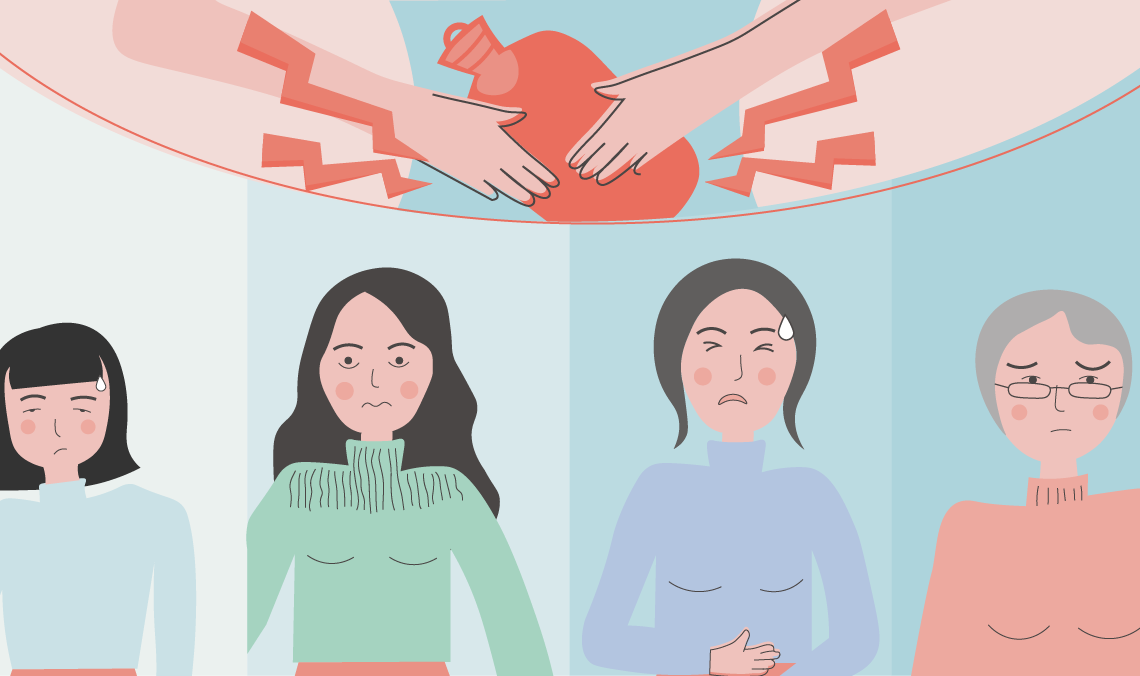Menstrual cramps, the monthly visitor that many women are all too familiar with, can be like uninvited guests that change their demeanor as we move through different stages of life. From the first twinges in adolescence to the subtler aches in perimenopause, understanding how these cramps evolve through various stages of life. Let’s take a journey through the ages and stages of menstrual cramps.
Adolescence – The Early Cramps
For many young girls, the onset of menstruation brings a wave of new experiences. Menstrual cramps during adolescence are often more pronounced as the body adjusts to the hormonal changes. Prostaglandins, chemicals released in the body, trigger contractions in the uterus, leading to cramps. The intensity can vary, with some girls experiencing mild discomfort while others might face more pronounced pain. Establishing healthy habits early on, such as staying hydrated and maintaining a balanced diet, can help manage these cramps.
Early Adulthood – Balancing Act
As women transition into their twenties and thirties, menstrual cramps may become more manageable for some, while others may find little change. Factors like stress, lifestyle, and overall health can play a significant role. Regular exercise, a nutritious diet, and stress management techniques can be valuable tools during this stage. For those with persistent discomfort, seeking guidance from a healthcare provider is crucial to rule out underlying issues.
Childbearing Years – A Rollercoaster Ride
Pregnancy and childbirth can bring temporary relief for some women, as the hormonal changes during these stages can suppress menstruation and associated cramps. However, postpartum menstrual cramps might make a return once the menstrual cycle resumes. For others, the intensity of cramps may vary during different phases of the menstrual cycle. This is an ideal time to explore menstrual care options and find what works best for individual needs
Perimenopause – A New Chapter
As women approach perimenopause, typically in their late forties or early fifties, hormonal fluctuations become more erratic. This stage marks the transition to menopause, and menstrual cramps may change in frequency and intensity. Some women may experience a decrease in cramps as their menstrual cycle becomes irregular, while others might face more intense cramps due to hormonal imbalances. Lifestyle adjustments, including a focus on overall well-being, can assist in managing these changes effectively.
Understanding the ebb and flow of menstrual cramps throughout the various stages of a woman’s life is key to managing this natural aspect of female health. Each stage brings its own set of challenges and adjustments, but by adopting healthy habits, seeking medical advice when necessary, and exploring personalized approaches to menstrual care, women can navigate these changes with greater ease. It’s time to embrace the wisdom that comes with experience and empower women of all ages to take charge of their menstrual health.








